A painter I know had this to say about Brion Gysin’s work as an artist.
Pleasantly surprised by his watercolour. First thought was an early Yves Tanguy, whom I admire very much. But the calligraphies —those 3-by-2-meter jobs— are outwitted any time by one little Michaux. That doesn’t invalidate the man’s effort, but I see too much repetitive strain there. Gysin’s calligraphies are paintings and, as such, can and should be viewed within a comparative context. There is of course André Masson to begin with—right up to Lee Krasner.
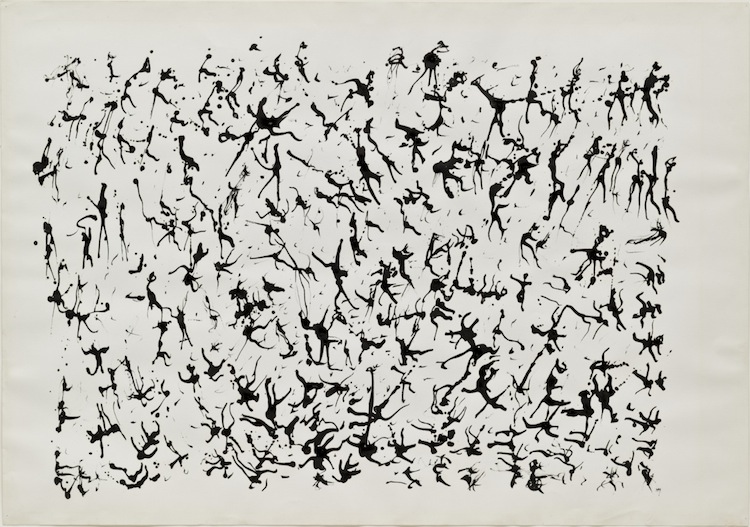
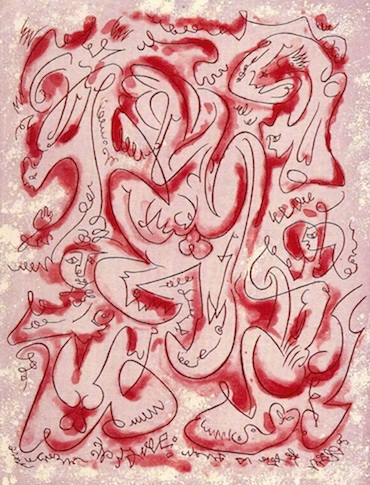
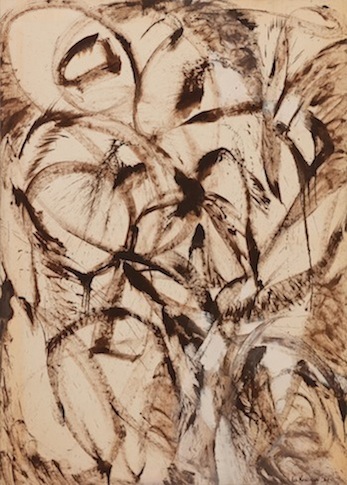
What is interesting though is the hiatus between Gysin’s Sahara Dante watercolour, which is an excellent piece of work, and the large calligraphies series. It would be interesting to have a look at the work in between—if there is such—it would give us an idea of the continuity in Gysin’s work as a painter.
Personally, I love Gysin’s calligraphies. I don’t see “repetitive strain” in them. Repetitive, yes. But I like the repetitions. By “strain” I suppose he means that they became a stylistic habit. Well, tant pis.
For easy reference:
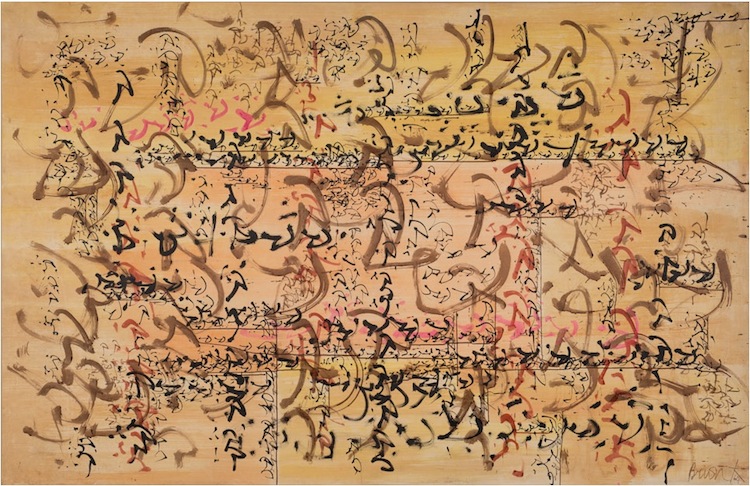
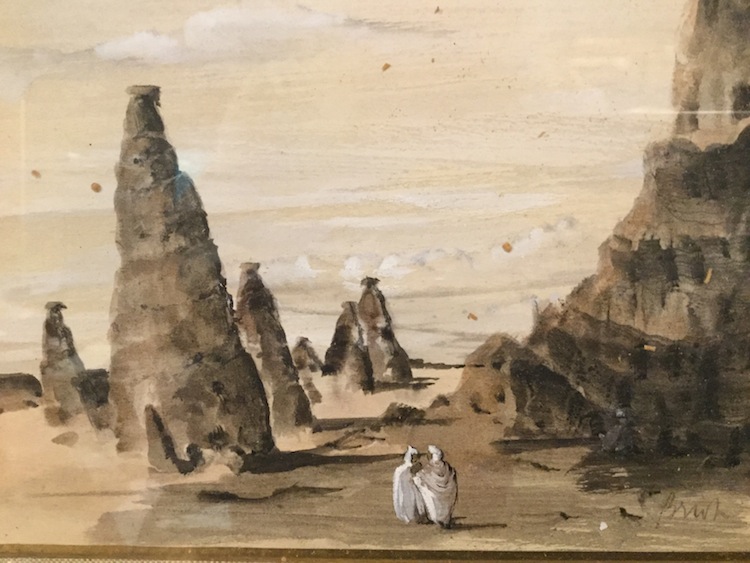

I loved all of BG’s work but always felt the period of the early 1950’s up through 1958 were his best period. As others have noted – Brion began to integrate the calligraphic element in later works from the late 1950’s and then abandoned the pictorial completely. I have always wished that that period had extended further. Someone should post one of the 1958 or later watercolours showing the calligraphic intrusion.
Brion’s calligraphies have a unique texture of expression. They reveal something of an inner language. Nobody would say language has “repetitive strains” because words & phrases keep reappearing. That’s exactly what the magic of lyrics is based on.
There are some ‘transitional phase’ calligraphs in the background of the photos in the Loomis/Dean article in LIFE.
And if you want a contrarian’s view of Gysin’s work, then get a load of this extract from an Essay by Melville Hardiment. Hardiment was in Paris in 1960 doing an article about ex-pat yanks when he visited the Beat Hotel. He was with his latest wife, the photographer Harriet Crowder.
He recalled the visit a generation later in the 80s.
.>>>>
Brion Gysin’s room was large, dark and contained within a series of enormous black and
white paintings which on first viewing I took to be works by Pollock, but which
later turned out to be Brion’s own original works of the kind Burroughs describes
as ‘the silent writings of Brion Gysin’.
Brion Gysin turned out to be a man who had been around for a long time, despite
his youthful appearance. Like David Gascoyne he had been a member of the circle
around Paul Eluard in the death throes of Late Surrealisme and which finally expired
when the Nazis entered Paris in 1940. Gysin and Burroughs had lived together
in North Africa and later Burroughs was to give me a small surrealiste painting by
Gysin of Burroughs, in Arab burnous and robes, standing as still and as immobile
as the turd of a camel, engulfed in a burning interminable desert. The figure so
small as to be impossible to identify and only after Burroughs explained he was
the subject could I be sure what or who the turd was representing.
Gysin’s large works I later came to see as huge pages from some alien calligraphic
Koran.
<<<<<<
Thanks for that, Jim. A great tale. Shall see if I can get a close look at that old LIFE spread. Some online archive must have it, open and free, I hope.
PS: first kwik pass at searching.
https://books.google.com/books?id=T1UEAAAAMBAJ&pg=PA123&dq=William+S.+burroughs&hl=en&sa=X&ved=0ahUKEwifhJDH-7XkAhVkmuAKHaDYDHcQ6AEIKDAA#v=onepage&q=William%20S.%20burroughs&f=false
The article at a glance looks downright nasty …. the Beat mythology gaining momentum then was obviously a threat, the kind that had to be put down. . . . I recall a different article. Shall keep looking for the spread with the Harriet Crowder fotos.
All the photos were by Loomis … the one with most Gysin paintings is this one in this article. I think it was used in the Life magazine but cannot find it yet https://www.artspace.com/magazine/art_101/in_focus/the-art-of-william-s-burroughs-53054
The two of them are sat at the same workbench as Gysin was sat in the Crowder photo you have in Let The Mice In …. but the paintings had been replaced by a huge calligraph
Yes, that’s the LIFE spread I recall seeing, which included a Loomis Dean photo showing Brion and William together in Room #25 at the Beat Hotel. William is sitting on a chair and Brion on his work desk. The wall behind them is hung with several large calligraphic works. That photo appeared in the original MICE. I can’t make out any of the transitional works you mention, at least not in that photo.
Ah! yes, that photo was in the orginal MICE, of course. The paintings were the ones I thought of as being transitional work but I can see now they are not as they are completely calligraphic….